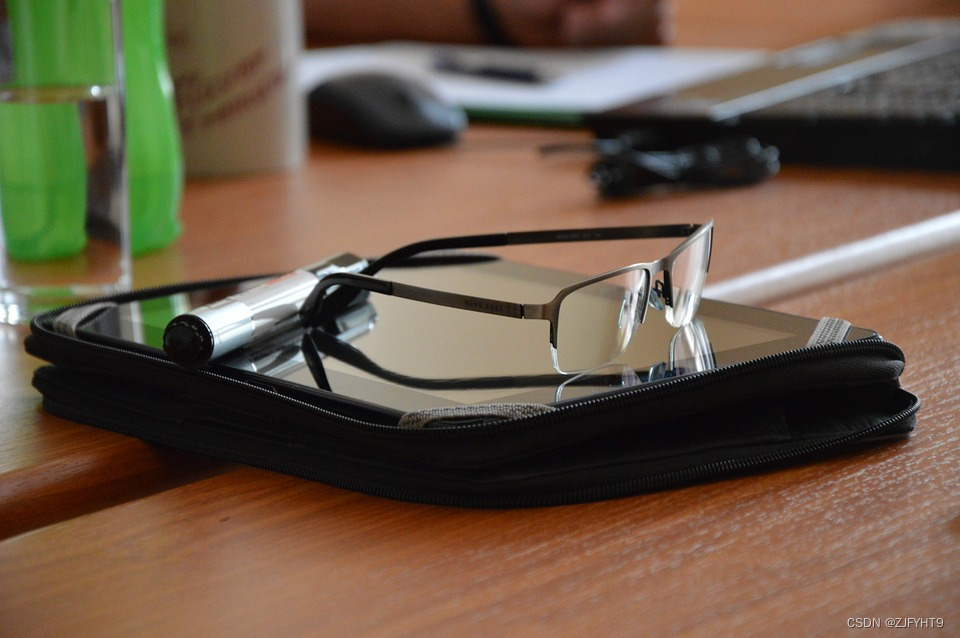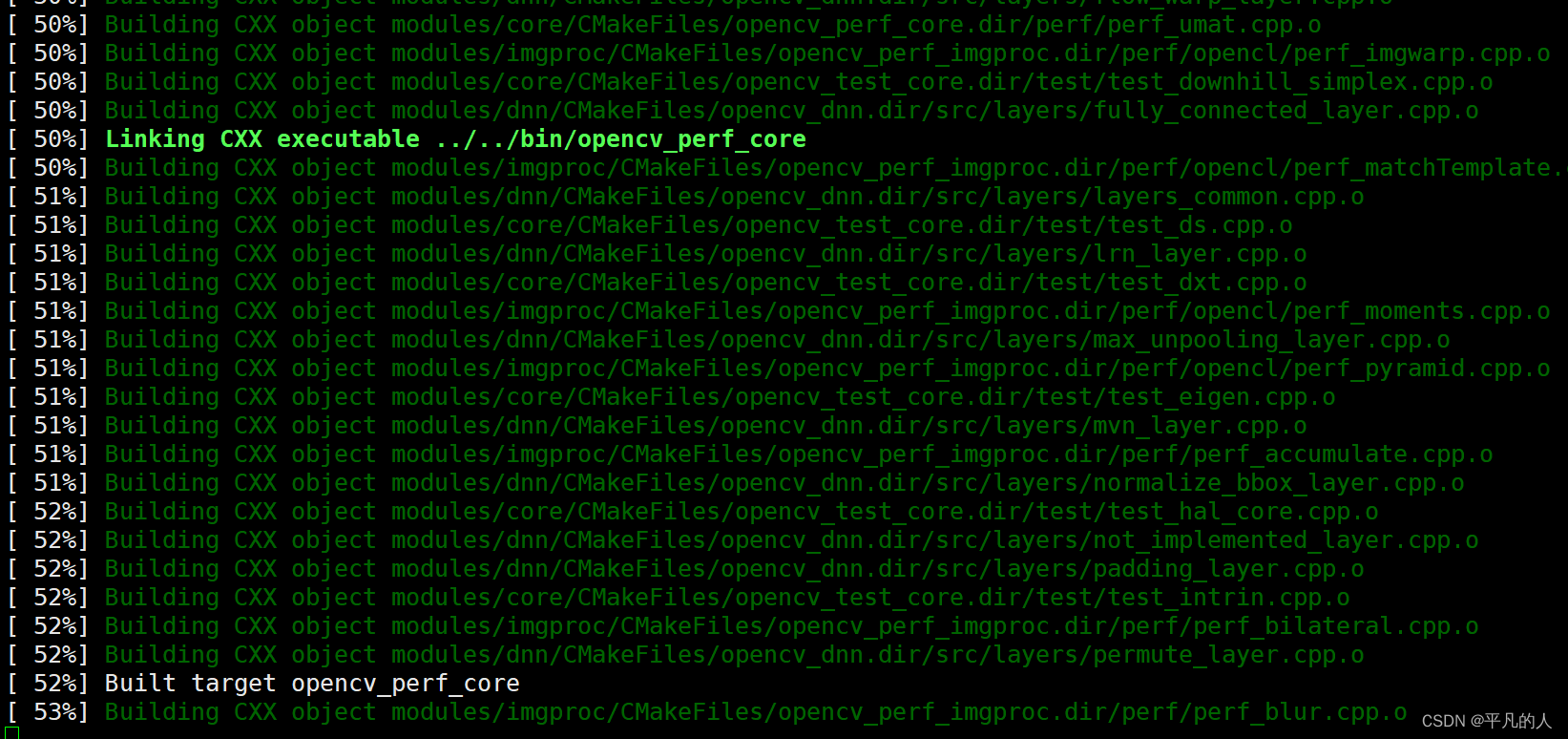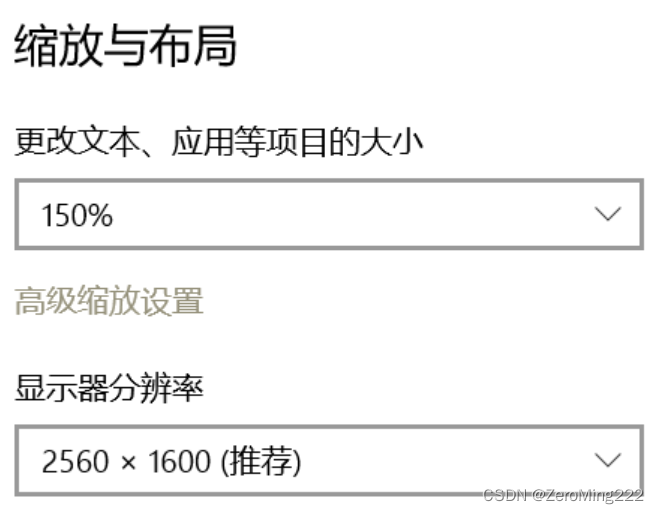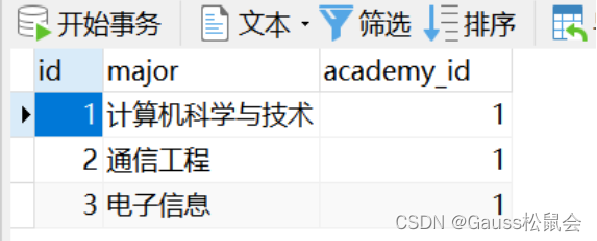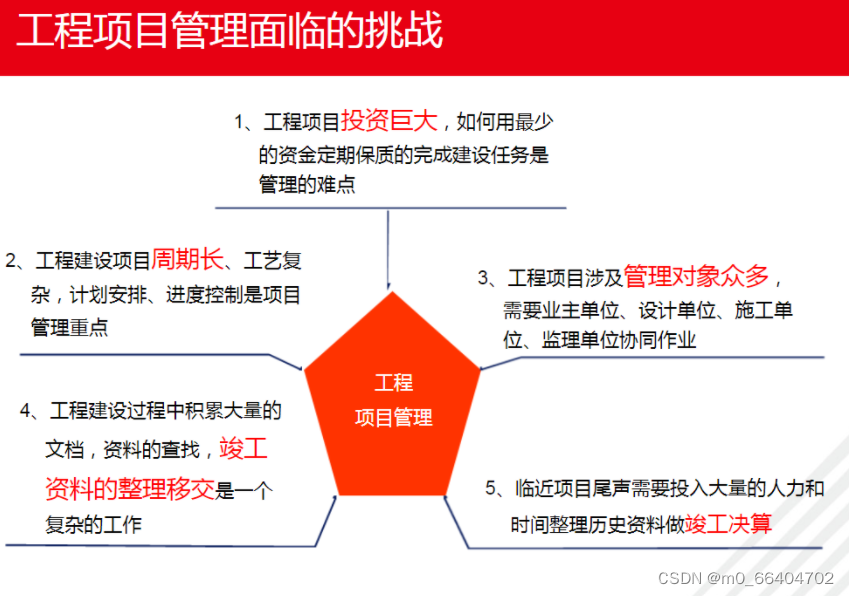2021年一篇文章,有很多断章取义的解读,本身这篇文章也有很多主观性强的输出。

文章数据都是2020年之前。
Received: 6 June 2020; Accepted: 27 January 2021;
长达17页的论文,看了一遍,觉得构思很巧妙。

类似一篇精心设计的实验。

普通:Sichuan Normal University + University of Jinan + Henan University
顶尖:Peking University + Tsinghua University
由于中小学要求过高,潜力过早开发,高校生后劲不足,或者说潜力已经开发完成,是一种推测。
每个人都有天花板,到顶后仅靠教育很难突破的。
过分解读意义不大。
机械化教育例如题海战术使得中小学量化指标优异的效果,在面对创新型需求日益增加的现代和未来社会被打回原型也是非常正常的。
个人经历,部分学生认同度低,课程会放弃,然后停止前行。
作业+报告都是Copy的,怎么会有提升呢。
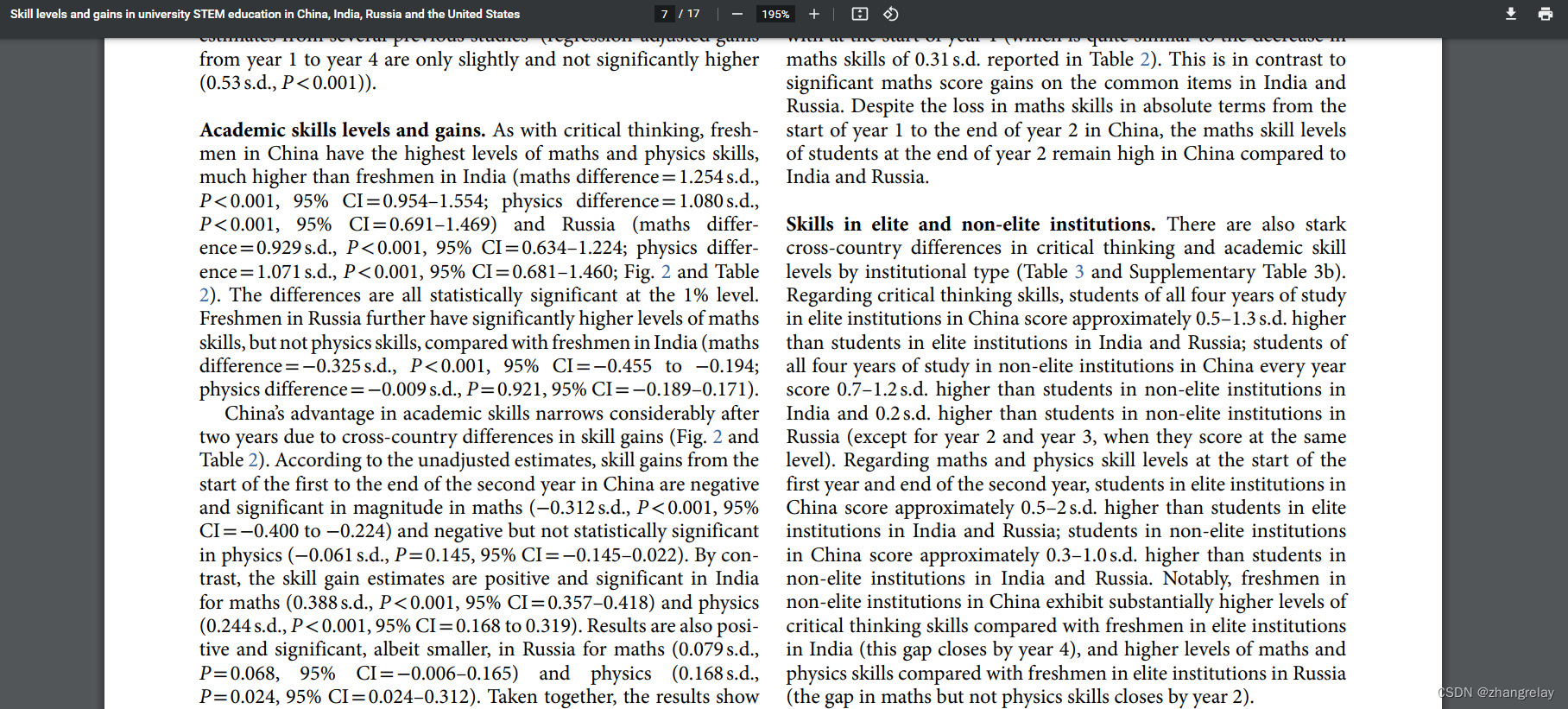
选自文中
原文:
Skill levels and gains in university STEM education in C-Nation, India, Russia and the United States
Skills in elite and non-elite institutions. There are also stark cross-country differences in critical thinking and academic skill levels by institutional type (Table 3 and Supplementary Table 3b). Regarding critical thinking skills, students of all four years of study in elite institutions in C-Nation score approximately 0.5–1.3 s.d. higher than students in elite institutions in India and Russia; students of all four years of study in non-elite institutions in C-Nation every year score 0.7–1.2 s.d. higher than students in non-elite institutions in India and 0.2 s.d. higher than students in non-elite institutions in Russia (except for year 2 and year 3, when they score at the same level). Regarding maths and physics skill levels at the start of the first year and end of the second year, students in elite institutions in C-Nation score approximately 0.5–2 s.d. higher than students in elite institutions in India and Russia; students in non-elite institutions in C-Nation score approximately 0.3–1.0 s.d. higher than students in non-elite institutions in India and Russia. Notably, freshmen in non-elite institutions in C-Nation exhibit substantially higher levels of critical thinking skills compared with freshmen in elite institutions in India (this gap closes by year 4), and higher levels of maths and physics skills compared with freshmen in elite institutions in Russia (the gap in maths but not physics skills closes by year 2).
There are large differences in critical thinking and academic skill gains among students in elite and non-elite institutions both within and across countries (Table 3). Students in elite institutions in C-Nation do not experience any skill gains in critical thinking and maths and physics skills from the start of the first year to the end of the second year. Students in non-elite institutions in C-Nation experience a significant decrease in their critical thinking skills from the start of the third year to the end of the fourth year (−0.505 s.d., P<0.001, 95% CI=−0.681 to −0.330) and in maths skills from the start of the first year to the end of the second year (−0.333 s.d., P<0.001, 95% CI=−0.437 to −0.229), and experience no gains in physics skills. Whereas the physics skills of students in elite institutions in India decrease during the first two years (−0.403 s.d., P=0.006, 95% CI=−0.650 to −0.156) and critical thinking skills decrease in the final two years (−0.343 s.d., P=0.019, 95% CI=−0.612 to −0.075), they make substantial gains in maths skills (0.306 s.d., P<0.001, 95% CI=0.210–0.402). Furthermore, students in non-elite institutions in India make significant gains in both maths (0.387 s.d., P<0.001, 95% CI=0.356–0.419) and physics (0.272 s.d., P<0.001, 95% CI=0.202–0.342) skills but experience a decrease in critical thinking skills during the final two years (−0.102 s.d., P=0.001, 95% CI=−0.159 to −0.046). Students in elite institutions in Russia appear to make gains in maths (0.257 s.d., P<0.001, 95% CI=0.178–0.335) but not in physics and critical thinking, whereas students in non-elite institutions make gains in physics (0.244 s.d., P<0.001, 95% CI=0.129–0.360) but not in maths and critical thinking.
机器翻译:
C-Nation、印度、俄罗斯和美国大学STEM教育的技能水平和收获
精英和非精英机构的技能。不同机构类型的批判性思维和学术技能水平也存在明显的跨国差异(表3和补充表3b)。在批判性思维能力方面,在C-Nation精英学院学习的所有四年学生的得分大约比印度和俄罗斯精英学院的学生高0.5–1.3 s.d;在C-Nation的非精英院校学习四年的学生,每年的分数比印度非精英院校的学生高0.7–1.2 s.d,比俄罗斯非精英院校学生高0.2 s.d(除了2年级和3年级,他们的分数相同)。关于第一年开始和第二年结束时的数学和物理技能水平,C-Nation精英院校的学生比印度和俄罗斯的精英院校学生高出0.5–2 s.d;C-Nation非精英院校的学生得分比印度和俄罗斯非精英院校学生高0.3–1.0 s.d。值得注意的是,与印度精英院校的新生相比,C-Nation非精英院校新生的批判性思维能力水平明显更高(这一差距在第4年时缩小),与俄罗斯精英院校新生相比,数学和物理技能水平更高(数学而非物理技能的差距在第2年时缩小了)。
在国内外精英和非精英院校的学生中,批判性思维和学术技能的提高存在很大差异(表3)。从第一年开始到第二年结束,C-Nation精英院校的学生在批判性思维、数学和物理技能方面没有任何技能提升。C-Nation非精英院校的学生从第三年开始到第四年结束的批判性思维能力显著下降(-0.505 s.d.,P<0.001,95%CI=−0.681至−0.330),从第一年开始到到第二年结束的数学技能显著下降(−0.333 s.d.,P<0.001,95%CI=−0.437至−0.229),在物理技能方面没有任何收获。尽管印度精英院校学生的物理技能在前两年有所下降(-0.403 s.d.,P=0.006,95%CI=−0.650至−0.156),而批判性思维技能在最后两年有所降低(-0.343 s.d.,P=0.019,95%CI=−0.612至−0.075),但他们在数学技能方面取得了显著进步(0.306 s.d.,P<0.001,95%CI=0.210–0.402)。此外,印度非精英院校的学生在数学(0.387 s.d.,P<0.001,95%CI=0.356–0.419)和物理(0.272 s.d.,P<0.001,95%CI=0.202–0.342)技能方面都有显著提高,但在最后两年(-0.102 s.d.,P=0.001,95%CI=−0.159至−0.046),批判性思维能力有所下降(0.257 s.d.,P<0.001,95%CI=0.178–0.335),但在物理和批判性思维方面没有,而非精英院校的学生在物理方面有所进步(0.244 s.d.,P<0.001,95%CI=0.129–0.360),但数学和批判性思维却没有。

![新兴新能源设施[2]--盐穴压缩空气储能预警模块开发](https://img-blog.csdnimg.cn/f05a82a2b16c4f589ee4834298afad5d.png)

